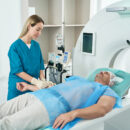What is Coronary CT Angiography / Virtual Angiography?

Cardiovascular diseases are one of the serious life-threatening health problems worldwide. Today, Coronary CT angiography has become an important technological advance in the early diagnosis of cardiovascular diseases.
Coronary CT angiography is a medical imaging technique that provides detailed images of the heart vessels using computed tomography (CT).
Coronary CT angiography method allows imaging of the coronary vessels feeding the heart and 3-dimensional examination of the lumen and walls of the vessels without performing classical angiography. In this way, it is used to detect coronary artery stenosis or occlusions, as well as coronary artery variations that may pose a danger.
What are the advantages of Coronary CT Angiography?
- Image quality is high.
- It provides information about anatomy and vascular connections in congenital heart diseases.
- Detailed information can be obtained about the anatomy of the heart vessels and their stenosis levels.
- It can be applied to people who have had a stent procedure or bypass surgery.
- Since it is a non-invasive procedure, it carries fewer risks compared to the traditional angiography method. This means less discomfort and fewer complications for patients.
- There is no pain during and after the examination. The patient can return to his routine life immediately after the examination.
How is Coronary CT Angiography performed?
The patient's vascular access is established and he is laid on the stretcher inside the tomography device. If necessary, medications are given intravenously to regulate the heart rate. Contrast material is given to the patient for imaging. Then the image is taken with CT. The procedure is very short-term and then patients can return to their daily routine.
How long does the process take?
It takes 30-40 minutes in total, including preparations, 5-10 minutes of which will be spent on the computerized tomography table where the shooting will be performed.
To whom is Coronary CT Angiography recommended?
It is recommended for patients at risk of cardiovascular disease and patients with suspected congenital cardiovascular anomalies.
Conditions that increase the risk of cardiovascular disease;
- People with heart disease in their family
- Those who experience unexplained chest pain
- High blood pressure patients
- Uncontrolled diabetic patients
- Obesity
- Those who smoke regularly
What should be taken into consideration after the procedure?
Plenty of water should be consumed so that the contrast material can be eliminated more easily from the kidneys.
Mehmet Adıgüzel
Radiology Specialist
Contact Us For Appointment:
Telephone line: 0392 444 3548 (ELIT)
Contact Form: https://www.elitenicosia.com/iletisim/












